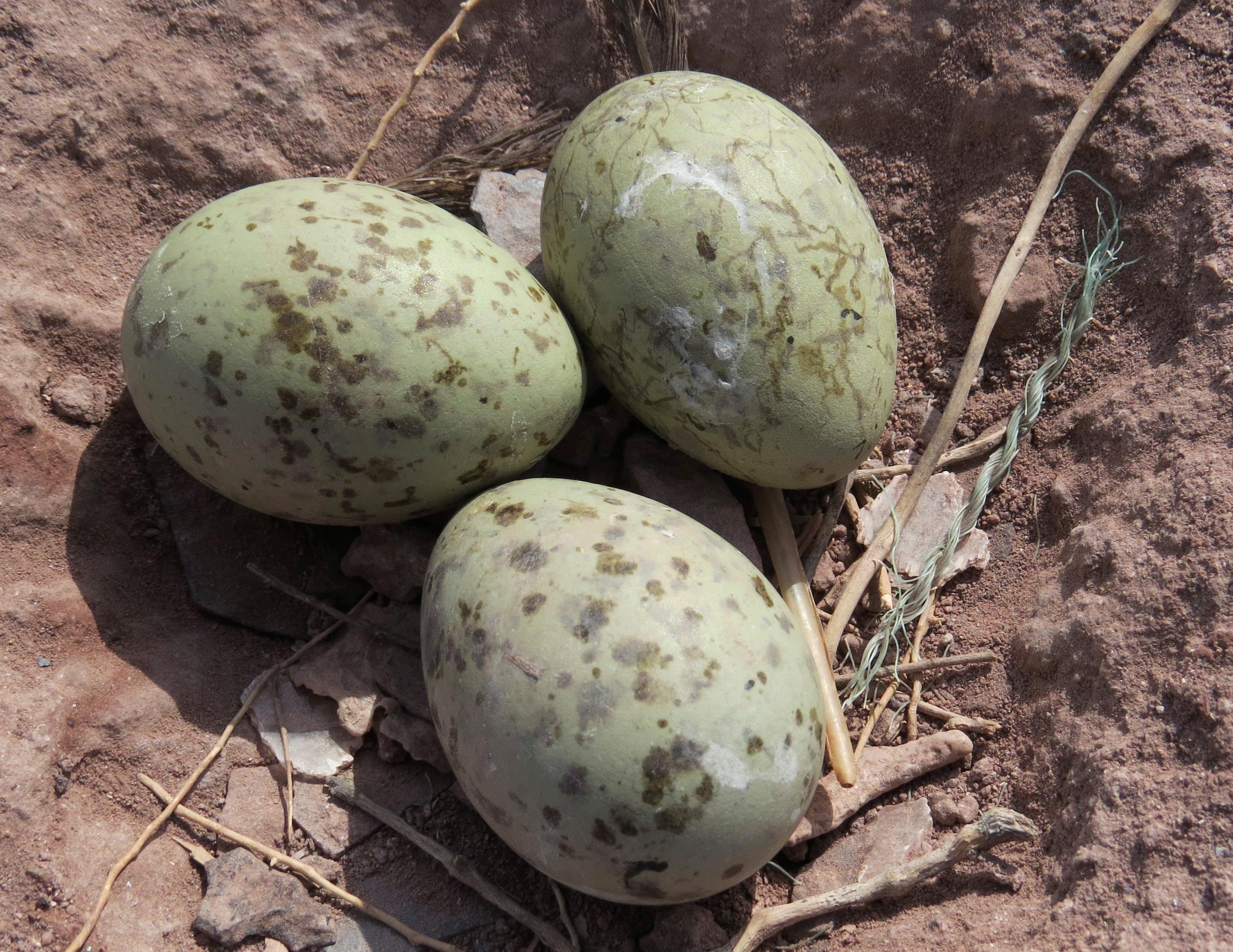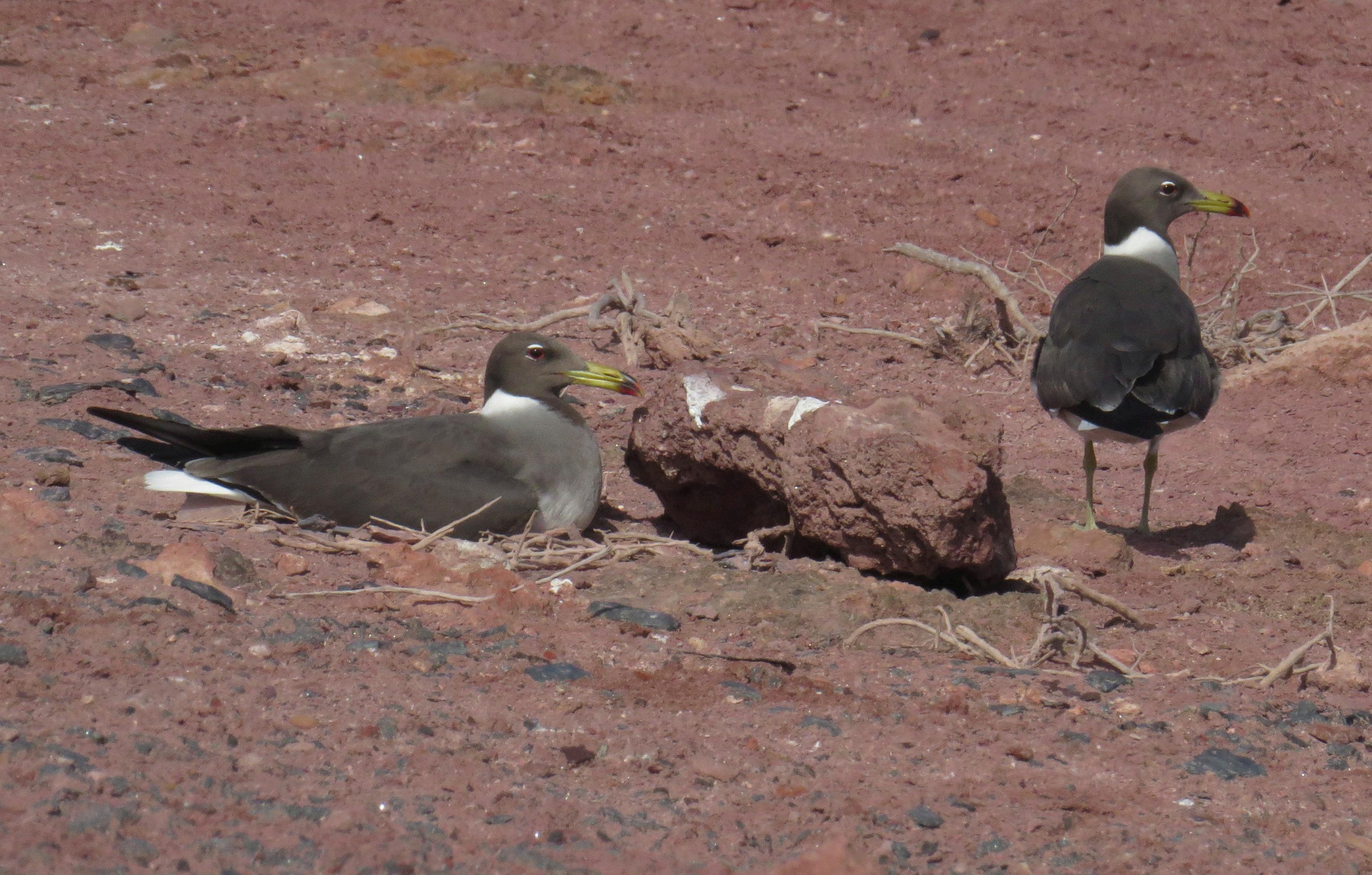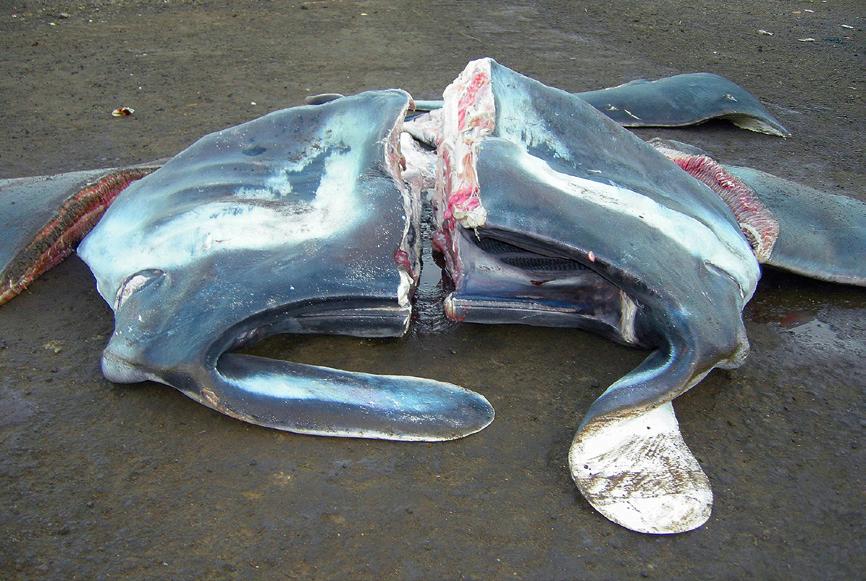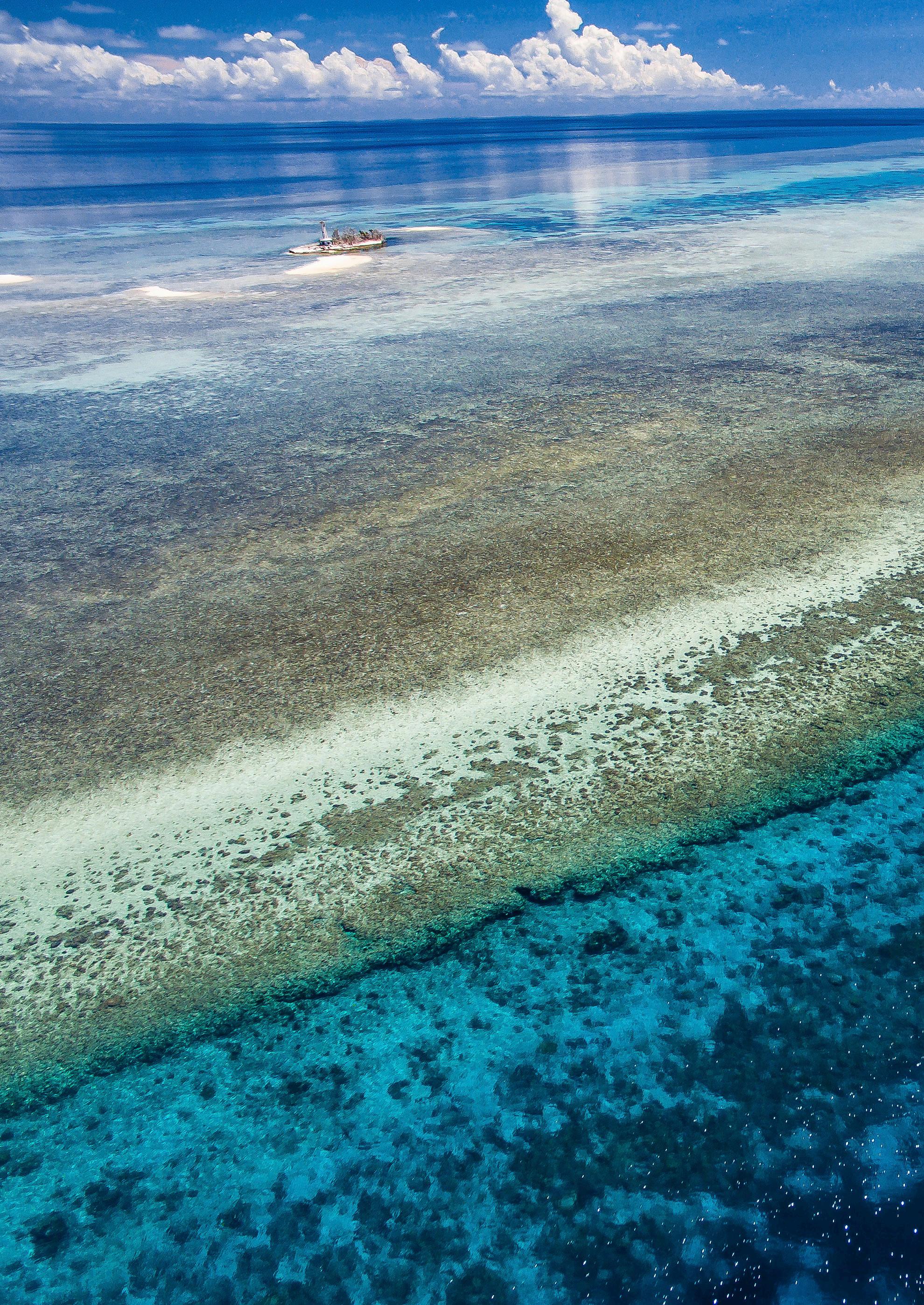
3 minute read
Sooty Gulls Found on Sir Bu Na’ir Island Using Marine Debris to Build Their Nests
FEATURE FADI YAGHMOUR – SCIENTIFIC RESEARCHER (EPAA)

Marine debris incorporated to this sooty gull’s nest.
The proliferation of plastics and other marine debris throughout the world’s oceans currently inflicts a confluence of grave and widereaching socioeconomic, human health and environmental hazards. Marine debris is defined as any manufactured solid waste product that is discarded, abandoned or lost into the marine environment. These materials include a wide diversity of items ranging from subtle particles to large jetsam. Researchers across the world have found that as the magnitude of anthropogenic marine debris increases, marine organisms become more and more vulnerable and have both injurious and deadly interactions with them. The number of species that are known to have suffered from interactions with marine debris has more than doubled since the late 1990s. This includes 100% of sea turtle species, 79% of marine mammal species, and 80% of seabird species. The susceptibility of marine life to interactions like debris ingestion or entanglement has received a great deal of attention by researchers; while other interactions such as the incorporation of marine debris into the nests of seabirds, which can lead to the entanglement or ingestion of marine debris by both parents or hatchlings, is still poorly understood.

Sooty gulls at the nesting colony.
Sooty gulls are known to breed in large colonies from April to October exclusively on islands of the northwest Indian Ocean. In the United Arab Emirates, sooty gulls are known to nest on coral islands including Dinah Island, Jarnein Island and Sir Bu Na’ir Island. Sir Bu Na’ir Island is on the UNESCO World Heritage Tentative list, a part of the Indian Ocean South East Asian Marine Turtle Memorandum of Understanding, a Wetland of international Importance by The Convention on Wetlands of International Importance and, since the year 2000, a protected area under the management of the Environment & Protected Areas Authority (EPAA) of Sharjah. In 2019, EPAA researchers investigated 258 sooty gull nests to evaluate the use of anthropogenic debris by sooty gulls in building their nests on Sir Bu Na’ir Island, Sharjah, United Arab Emirates.
With 11% of investigated nests consisting of marine debris, it was determined that sooty gulls frequently use anthropogenic debris as nesting materials in Sir Bu Na’ir Island. Researchers also compared the types of marine debris in the nests and on adjacent beaches to determine if the birds were selecting specific types of debris for nest building. As 80% of beach litter consisted of plastics, while conversely, 76% of nest debris consisted of non-plastic rubbish, it was determined that sooty gulls were strongly selecting non-plastic rubbish such as glass fragments, fabric and cans in constructing their nests. This was an interesting and unique finding because in other studies marine birds were revealed to mostly utilise plastics. This might be because seabirds from other studies mostly utilise vegetation in nest building which they may fail to discriminate with elongated thread-like plastic marine debris. Sooty gulls also use vegetation in nest building, which seems to result with them using debris such as ropes and fishing lines. However, sooty gulls mostly use rocks and minerals in nest building which seems to result with them mostly using debris such as glass fragments, used ammunitions and beverage cans in constructing their nests.
Though the level of marine debris in sooty gull nests is relatively low when compared to the nests reported in others studies, the reported levels are still shockingly high when they occur in an uninhabited remote area like Sir Bu Na’ir Island. This does come to show how marine debris has become an ubiquitous menace in the marine environment and a pervasive and lingering threat that shadows seabirds from cradle to grave.

Marine debris collected from individual sooty gull nests.
ABOUT EPAA:
In line with the vision of His Highness Sheikh Dr. Sultan bin Mohammed Al Qasimi, Supreme Council Member and Ruler of Sharjah, the Environment and Protected Areas Authority, under the leadership of Her Excellency Hana Saif Al Suwaidi, aims to protect Sharjah’s natural environment and conserve its rich biodiversity. This is achieved through data driven policies and increased public awareness and participation in supporting the principle of sustainable development to preserve natural and environmental capital to the benefit of present and future generations.
WEBSITE:
www.epaashj.ae/
SOCIAL MEDIA PLATFORMS:
www.twitter.com/epaa_shj
www.facebook.com/epaashj
www.instagram.com/epaa_shj/










